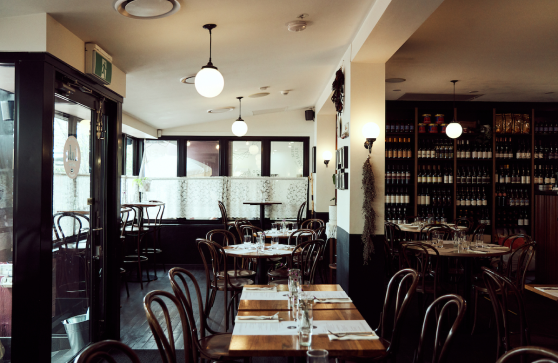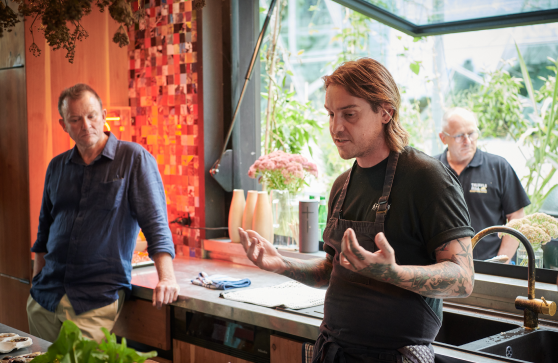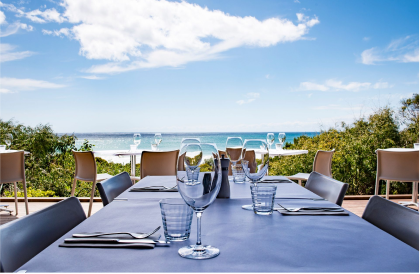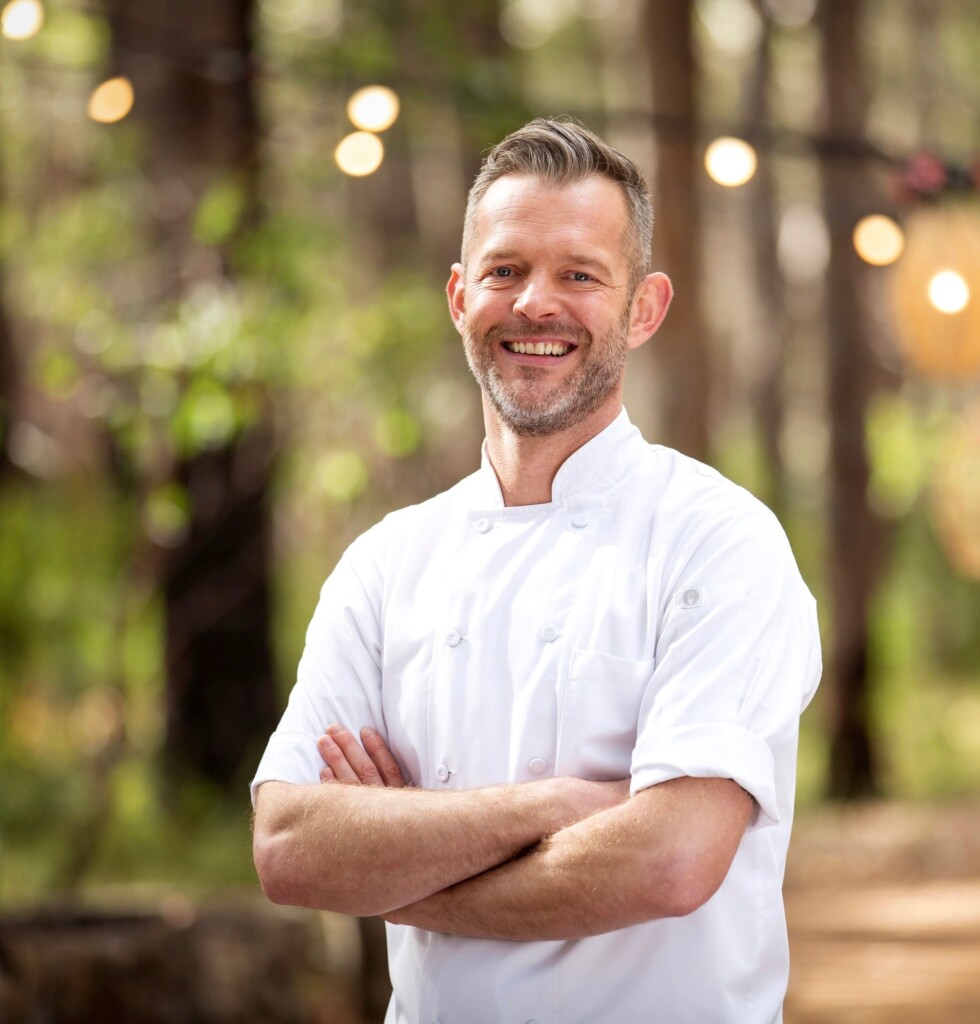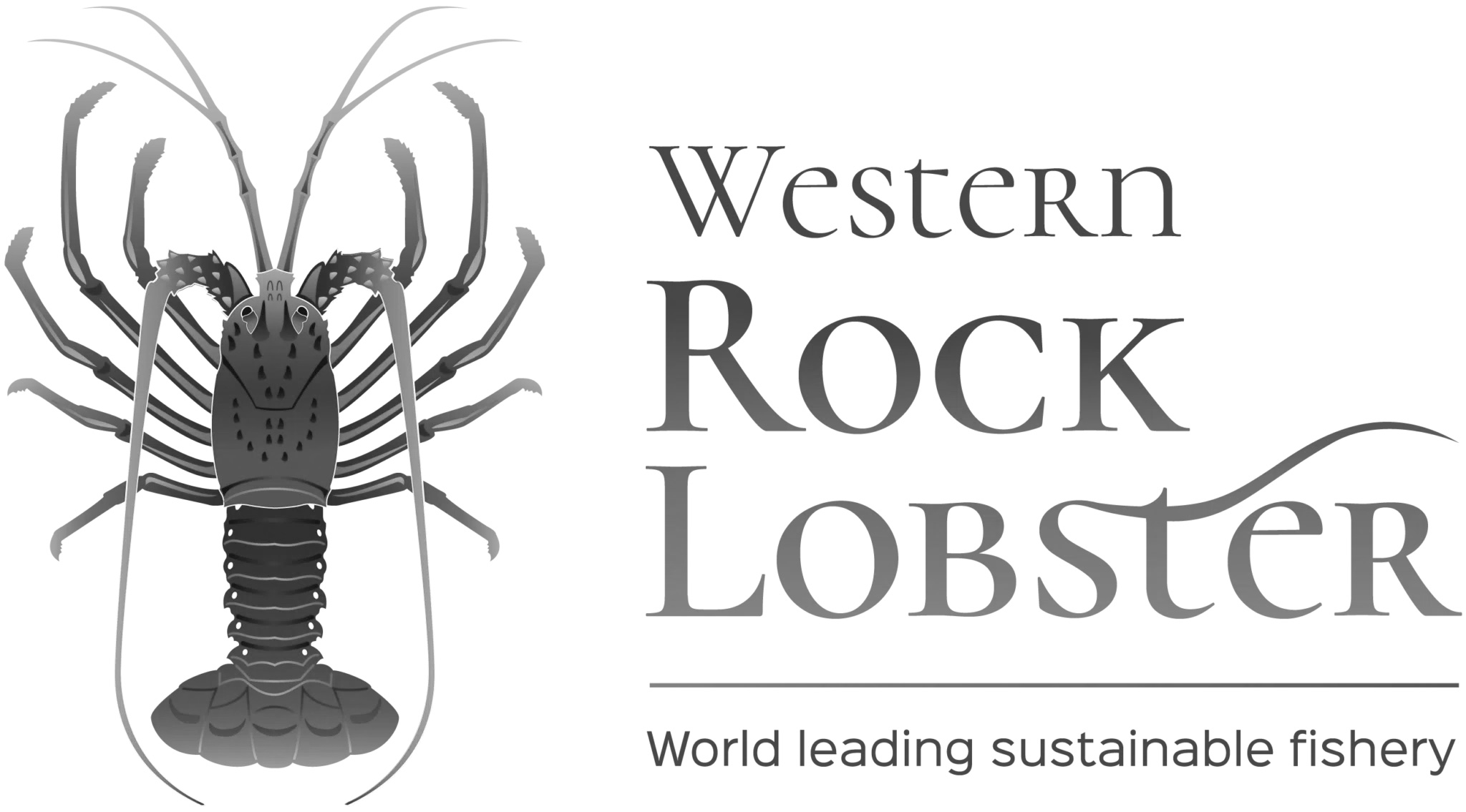A canteen with Burmese spice and soul-deep hospitality opens in Margaret River
When was the last time you ate at a skatepark? Or tucked into a plate of laphet thoke, a kaleidoscopic salad of mulchy fermented tea leaves, dried shrimp, tomatoes and buttery shards of roasted peanuts? If your answer to both of these questions is never, then you’re not alone. But you’re also in luck.
Lesser-known Southeast Asian dishes and Margaret River’s breezy vibes collide at Dahl Daddys, a small but mighty canteen taking over the local skate park’s café space every Thursday to Monday afternoon.
Focusing on food from Burma, but not exclusively, the canteen’s tiny blackboard menu plucks inspiration from former Fervor chef Corey Rozario’s Burmese heritage and years “bouncing around” South Asia. Expect bold flavours of earth and brine, sourness and heat, and turmeric-stained curries that radiate warmth. Plus ample flavour-packed sides, like lime pickle, sambal and smoked fish sauce.
Here, we chat with Rozario about his travels, the secrets to making the perfect dahl and the West Australian ingredients he loves working with.
Dahl Daddys brings something entirely different to Margaret River. How has the reception from the locals been?
It’s been very positive. Yeah, they’re very happy that we’re there. We hear that quite often. I would always say thanks for coming. And they always respond with thank you for being here. The gratitude is going both ways. It gives us a sense of drive as well. It helps us daily to hear that. We really cherish our customers. On Fridays, we’re very busy with regulars. It’s kind of like a little meetup spot at the moment. That’s really what we were striving to achieve through the process: to have a spot where people can relax, eat, chill.
Dahl Daddys is in a temporary space, but you really get a sense for what you’re trying to achieve. It feels homely.
It kind of came naturally. It’s kind of all the things that you would see in my house, all the same sort of feel. My room’s full of flowers and books and music. And you add food on top of that. We’d really love to have some beautiful furniture to hang out on but that’s not within our realm at the moment. It’s kind of just a reflection of what we like. I think that speaks on a food level and a space level.
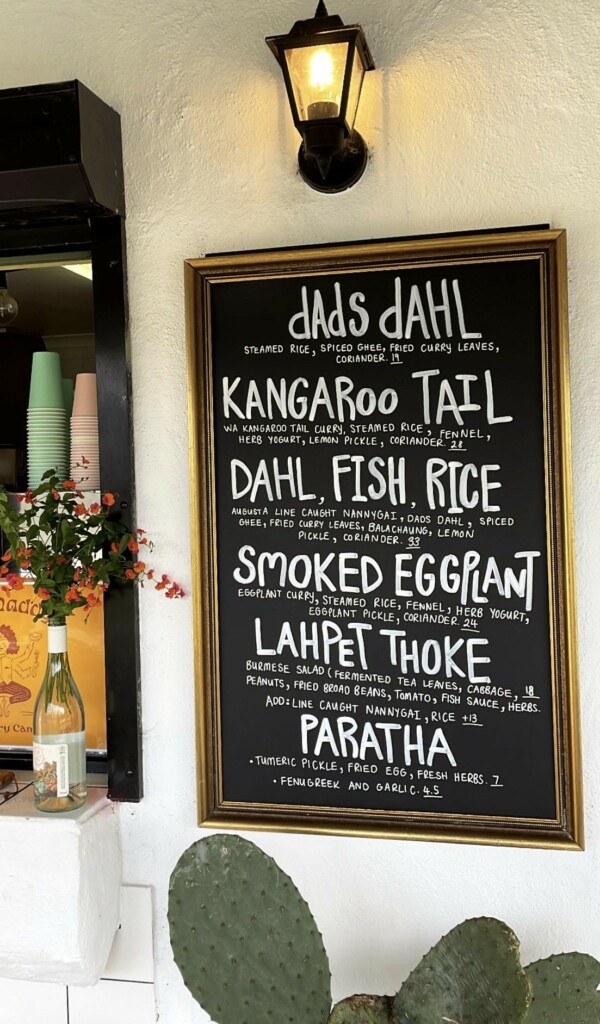
You spent a few years travelling throughout Asia. Were there any places you visited or regional cuisines you ate that really impacted you and influenced your cooking style?
I spent some years just bouncing around and had no real plan. I didn’t have a bucketload of money, but I had enough to live cheaply, which then plays in the hands of eating regional. I suppose the places that spoke to me heavily would be Vietnam, Thailand and Burma, of course, due to the relationship I have with that place. I went all through Laos, Cambodia, Vietnam, Indonesia, India, Malaysia, Thailand. I’ve always had a soft spot for that kind of food. I’d always opt for Asian food. I’ve always cooked it, always sort of strived to improve in that world. And I’ve got ways to go, put it that way. It’s such a broad scope. I can only do what I know and learn as I go.
During your travels did you set out to learn new cooking techniques and recipes?
In Indonesia I was staying with a cook in one of the villages in Java. She was dubbed as the best cook in town. I learned a lot from her just going to the market and seeking the produce and doing the procedures. Burma, it was that same sort of thing, just kind of interacting with the people. I did work with some ladies cooking parathas and would take those sorts of visual learnings and put them in practice in hostels where I could. It was more of a monkey-see-monkey-do sort of thing rather than actually hands-on training with the people, I guess. And yeah, just trying to soak in knowledge that way.
Tell me about visiting Burma for the first time, and what it was like to eat the food you grew up with, in the motherland?
It was great. It was really cool. And even just eating things that I’ve never heard of or seen. I ate a lot of the classic curries and the laphet and the dhol dhols and the mohingas and ohn no khao swè [Burmese curry chicken noodle soup] and all those sorts of foods. There were so many different regional cuisines and dishes that I’d never had before, like shan noodles. I think I ate that nearly every day when I could find it. I still don’t know how to make it, but it’s on the hit list of to do. I loved how you get your food off the ladies sitting on the ground. And the trucks with the bains sitting there with multiple different vegetables and curries and all kinds of salted preserved fish.
Dahl Daddys is a great introduction to Burmese cuisine for a lot of people. What Burmese dishes are you looking forward to introducing people to?
Things I would like to incorporate are the shan noodles, and things more of the fresher side like salads and fresh vegetables. And see-pyans, curries that don’t have gravy. I feel like it’s gonna be a harder one because the food’s very oily. I’m trying to keep this healthy side to what I’m doing as well, not just because Margaret River is healthy but also, it’s kind of how I like to live. Then yeah, just like more of the salad-y and fermented sort of stuff as well.
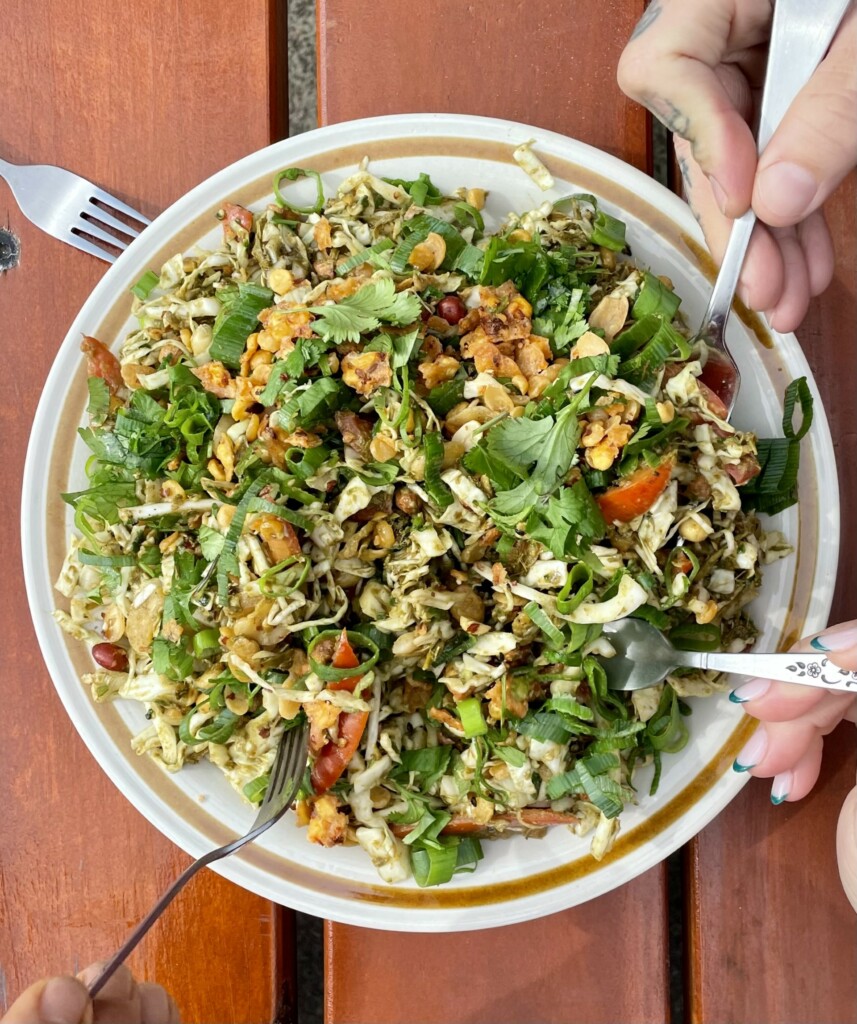
Are there ingredients important to Burmese cooking that are difficult to get your hands on here?
I love bamboo. I love working with it. It’s delicious. I feel people have tried it, but tried it in a different way. I mean, you get your classic tinned bamboo in a water brine; it’s kind of super fibrous still and not great. I’d love to have access to fresh bamboo. And tamarind leaves. I’m living in the South West where it’s cold, so I can’t get copious amounts of lemongrass. Fresh, good, strong lemongrass is just not easy to find. I’m working on it. I’ve got a few farmers out here that have it, but not the amounts I would like. It’s a slow process trying to get these things, but I am. Even trying to get curry leaves is difficult. I work hard to get the amount of curry leaves we go through. They’re everywhere on my menu.
I am obsessed with the scent of curry leaves. That and mustard seeds.
Do you use mustard seed oil? I use it a lot. I don’t go too hard with it because it’s pretty on the nose, but it’s a pretty important part of my cooking as well. It carries different flavours. It’s definitely not a hard ingredient to find, it’s just using it correctly. Oils are basically vessels to carry flavour and how they carry it is subject to their makeup. Mustard oil is thin and it hits the back of your throat, the back of your tongue. It’s a very loose oil so I use it in conjunction with ghee. Because ghee is very thick and buttery, it covers your mouth, your lips. But the mustard seed oil will get right into the back of your mouth, down your throat and the back of your tongue. It will carry more bitter, astringent flavours whereas the ghee carries more sweet flavours, like cumin and cinnamon. Mustard, fennel and turmeric and things like that will be carried with the mustard seed oil. So if you use them together, it creates a full-mouth, full-throat palate. It carries different flavours in a different way to different places in your mouth.
Let’s talk about the kangaroo curry. It’s so rich and delicious, but sustainable too.
It’s on the menu this week. I’ve gone with kind of an influence from the south east of India. It’s very rich with cinnamon, cardamom, cloves, black pepper. It’s a bold sort of spice profile. I’m using it with tail this week, but as I get low on that I’ll probably roll out meatballs. I love making meatballs. I grew up eating a lot of meatball curries, generally beef. Meatball and potato curry was something I would look forward to if I heard mum or dad were cooking it. I’ve managed to get some really good kangaroo. Almost all of the kangaroo I use is WA kangaroo and it comes in fresh, not frozen. It’s delicious. And it’s about as sustainable as we can get.
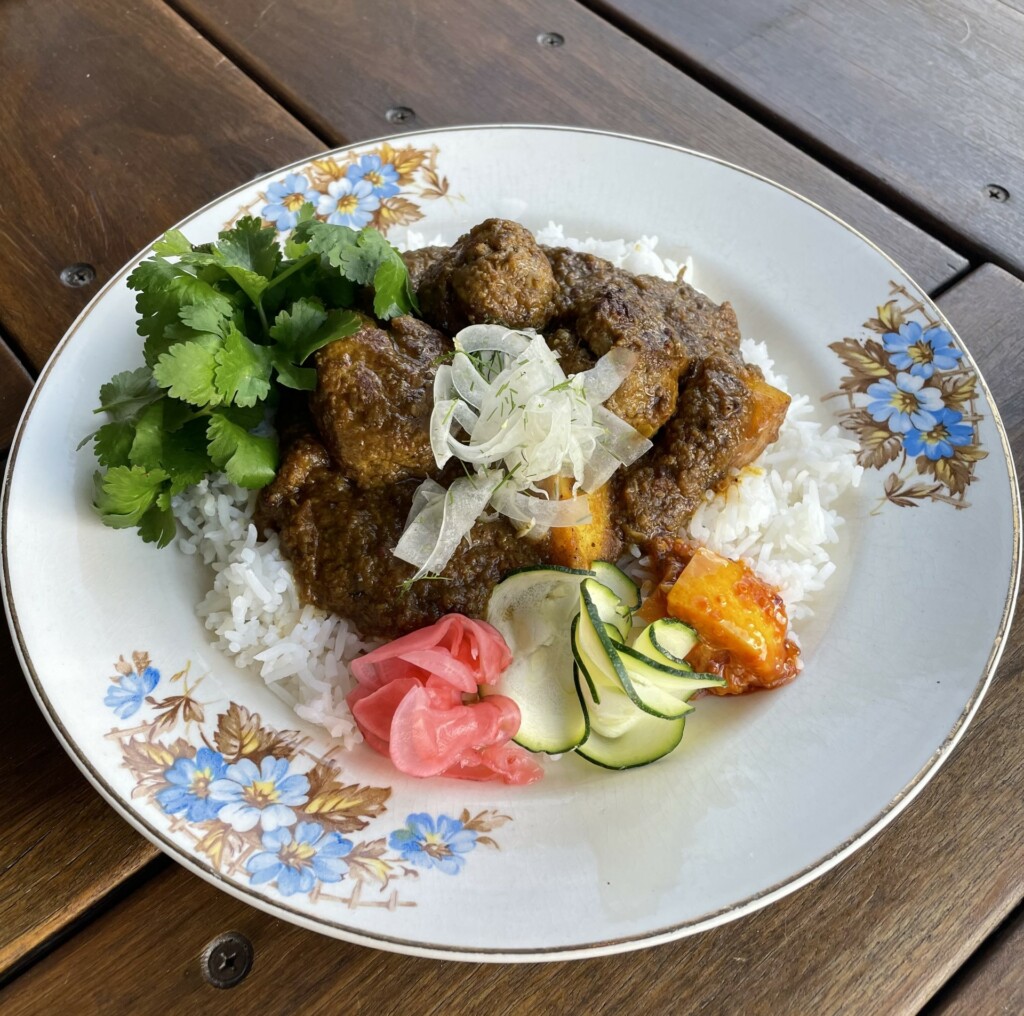
People can still be hesitant to opt for kangaroo, and it’s not often on the menu at casual spots. Are you hoping people who try your curry will be more inclined to give it a go more often?
Yeah, for sure. I have noticed that people come back for the kangaroo. Even a kid the other day came in with his dad. The dad was talking to his kid and said, “Oh, they don’t have the kangaroo today, sorry son.” And I was like what, your son likes it? And he said, “he loves your kangaroo. We came here because he wanted the kangaroo curry.” If the kids are liking it, then we’re doing the right thing.
What other Western Australian ingredients are you excited to put on the menu?
I just picked up three kilos of freshly hand-caught nannygai and that’s going on the menu this weekend. It was caught off Gracetown by a small family business and they catch them with handlines. So, it’s about as sustainable as you can possibly get. My favourite meal is dahl, fish and rice, so that’s how I’m going to treat it and let that beautiful fish speak for itself. Just pan fry the fish in some ghee. I actually dehydrated some laphet and turned it into a salt, so I’m gonna season the fish with that.
I’ve just started working with Rosa’s Ridge chicken, too. It’s beautiful. It’s great. I actually went out to the farm and had a little tour. I just hit him up and said I’d like to see where it’s coming from, how they farm and learn. I didn’t know much about regenerative farming and the basics and they really gave me a good rundown. They’ve got some pigs, so that’s great for me because then I can start using some pork and make my pork curry.
I’ve grown up eating pork and bamboo with roselle curries, so that’s what I’m striving to achieve. Pretty much like lemongrass, ginger and using the sourness of the bamboo and roselle leaves. And just that beautiful fatty pork. It’s an oil-rich curry, but it is delicious.
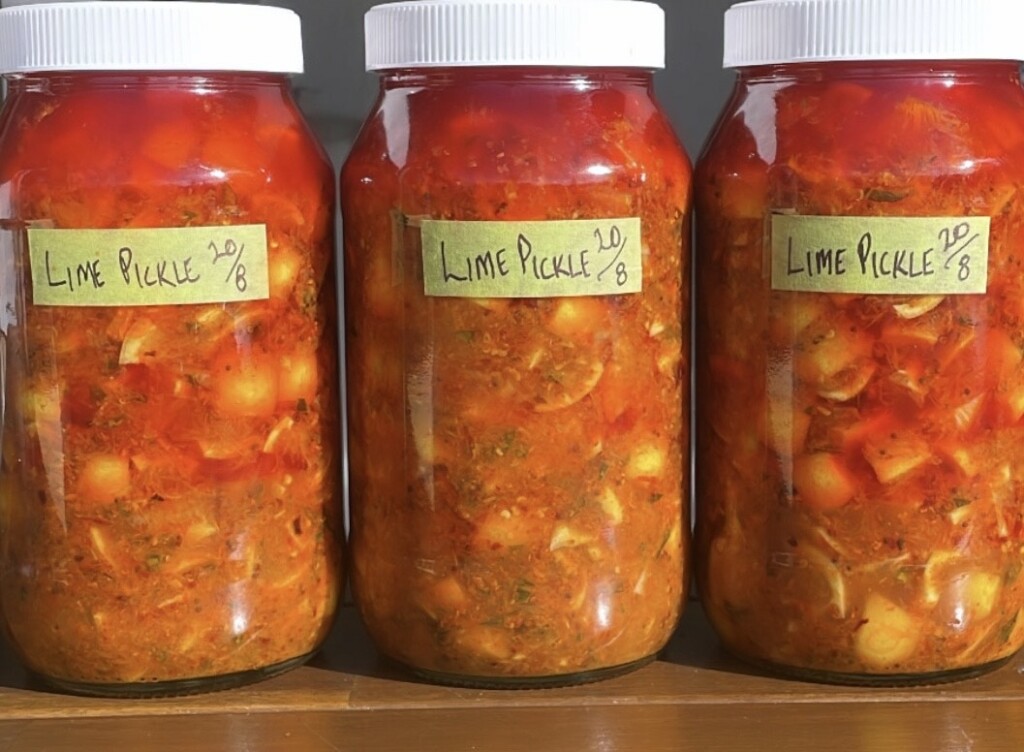
That chicken is a good example of what Dahl Daddys is all about. It presents simply, but it starts with a healthy bird, then when you serve it, even though it’s in a canteen next to a skatepark, there’s layers and layers that make it memorable.
My favourite way to serve it is in my green chicken curry with makrut limes, which are fruiting right now. Doing a makrut lime and coconut curry is a lot of work. Like peeling all the limes and going through that whole process is a lot. I don’t usually speak highly of what I do, but it’s really, really delicious. Lots of fish sauce, shrimp paste, heaps of lemongrass, and I have been doing it on the bone.
Finally, tell me about the dahl you’re offering. I believe it’s your dad’s recipe.
He definitely taught me the fundamentals, but I’ve gone a bit further, I think, with the complexity of it. He definitely introduced me to ghee and tempering spices and doing certain procedures. But his are a little bit more simple and delicate, whereas I try to make more of a bold, full-bodied dahl. When I’m at home I’ll make all different kinds of dahls using different lentils. But I’ve had to create a recipe due to the fact I’ve got to cook a lot of it and I want consistency because people come back for it. I think I just fell in love with dahls. It’s like my home staple.
It’s less about the recipe or the procedure of cooking it and more about just the respect and love for it. I’ve worked really, really hard for many years to go a few steps beyond his recipe.
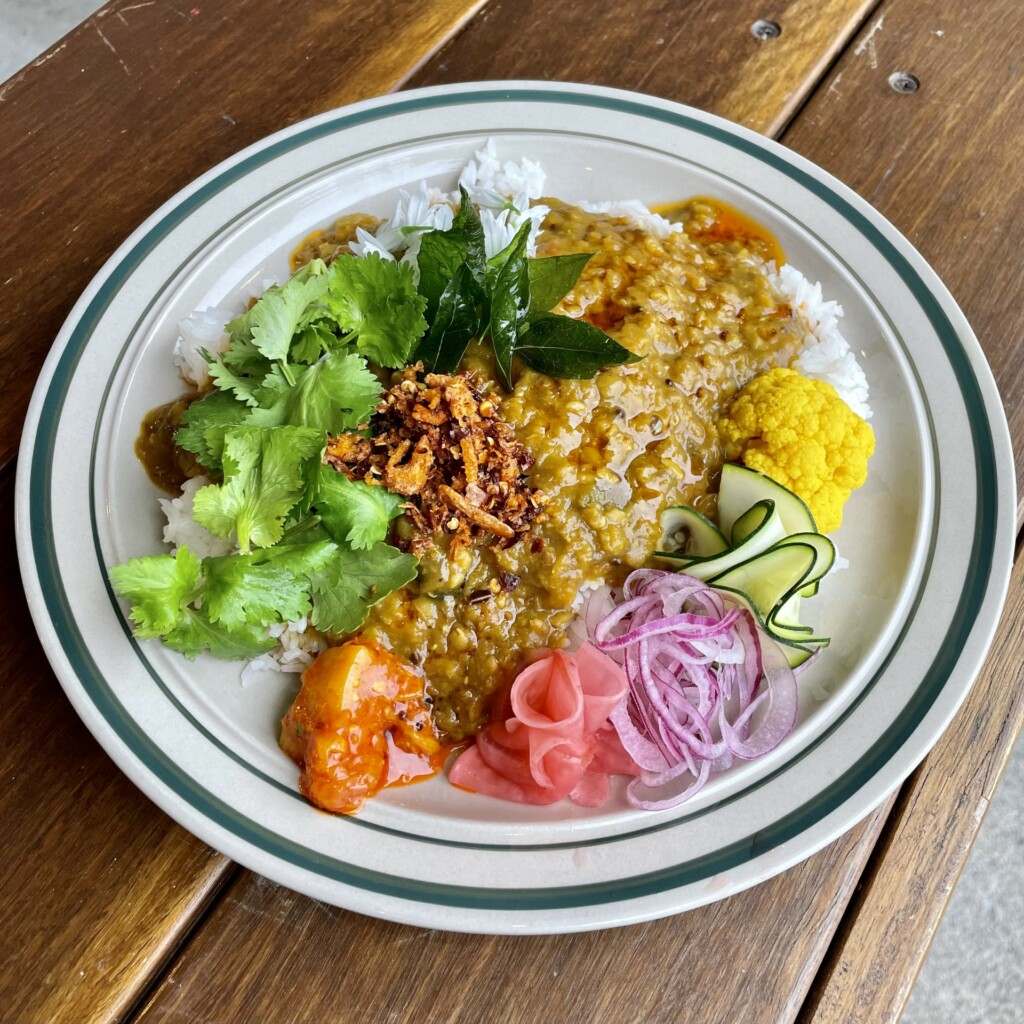
Dahl Daddys, 31 Walcliffe Rd, Margaret River; @dahldaddys
